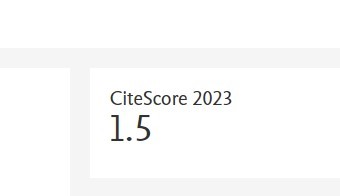Conocimientos estructurales de asfáltenos mediante reacciones de oxidación leves y espectroscopia de infrarrojo medio
Resumen
Cuatro asfaltenos fueron sometidos a reacciones de oxidación suaves. Los productos de oxidación se caracterizaron mediante espectroscopía infrarroja para proponer descriptores estructurales, aprovechando la alta sensibilidad para detectar vibraciones de carbono y oxígeno en el espectro infrarrojo. Aunque el trabajo no se enfocó en cuantificar grupos funcionales, se logró una buena comparación entre la materia prima y los productos, después de de-convolucionar los espectros FTIR. Se confirmó que los grupos metilo son fragmentos útiles para rastrear la posición de las topologías alquílicas sobre las estructuras de asfaltenos durante las reacciones de oxidación, ya que la oxidación es más adecuada en α-H de las cadenas de alquilo laterales. Considerando lo anterior, se pudo inferir que los ésteres fueron los principales grupos funcionales formados bajo las condiciones de oxidación empleadas. La formación de lactonas sobre núcleos aromáticos se monitoreó a través de la pendiente de un diagrama de paridad entre las intensidades de las bandas alrededor de 1730 cm-1 y 1230 cm-1. Los análisis TGA-MS y
de RMN-H1 ofrecieron ofreció información valiosa que contribuyó a confirmar los atributos estructurales de las muestras obtenidos por FTIR. Los resultados obtenidos en esta investigación demuestran que el manejo de la selectividad de oxidación sobre mezclas de hidrocarburos tan complejas podría tener una relevancia más amplia que se extiende más allá del uso de procesos de oxidación para la mejora de asfáltenos, hacia propósitos de caracterización
estructural.
Referencias bibliográficas
AIST. (2021). Spectral Database for Organic Compounds SDBS. 3,4-Dihydrocoumarin. https://sdbs.db.aist.go.jp/sdbs/cgi-bin/direct_frame_top.cgi
Asemani, M., & Rabbani, A. R. (2020). Detailed FTIR spectroscopy characterization of crude oil extracted asphaltenes: Curve resolve of overlapping bands. Journal of Petroleum Science and Engineering, 185, 106618. https://doi.org/10.1016/j.petrol.2019.106618
Bian, H., Kan, A., Yao, Z., Duan, Z., Zhang, H., Zhang, S., Zhu, L., & Xia, D. (2019). Impact of Functional Group Methylation on the Disaggregation Trend of Asphaltene: A Combined Experimental and Theoretical Study. The Journal of Physical Chemistry C, 123(49), 29543–29555. https://doi.org/10.1021/acs.jpcc.9b07695
Brown, K. N., & Espenson, J. H. (1996). Stepwise oxidation of thiophene and its derivatives by hydrogen peroxide catalyzed by methyltrioxorhenium (VII). Inorganic chemistry, 35(25), 7211-7216. https://doi.org/10.1021/ic960607+
Cagniant, D., Nosyrev, I., Cebolla, V., Vela, J., Membrado, L., & Gruber, R. (2001). Structural modifications of petroleum asphaltenes by reductive alkylation investigated by TLC-FID. Fuel, 80(1), 107–115. https://doi.org/10.1016/S0016-2361(00)00041-7
Chacón-Patiño, M. L., Rowland, S. M., & Rodgers, R. P. (2018). Advances in Asphaltene Petroleomics. Part 3. Dominance of Island or Archipelago Structural Motif Is Sample Dependent. Energy and Fuels, 32(9), 9106–9120. https://doi.org/10.1021/acs.energyfuels.8b01765
Chacón-Patiño, M. L., Niles, S. F., Marshall, A. G., Hendrickson, C. L., & Rodgers, R. P. (2020). Role of molecular structure in the production of water-soluble species by photo-oxidation of petroleum. Environmental Science and Technology, 54(16), 9968–9979. https://doi.org/10.1021/acs.est.0c01158
Chacón-Patiño, M. L., Vesga-Martínez, S. J., Blanco-Tirado, C., Orrego-Ruiz, J. A., Gómez-Escudero, A., & Combariza, M. Y. (2016). Exploring Occluded Compounds and Their Interactions with Asphaltene Networks Using High-Resolution Mass Spectrometry. Energy and Fuels, 30(6), 4550–4561. https://doi.org/10.1021/acs.energyfuels.6b00278
Chacón-Patiño, M. L., Rowland, S. M., & Rodgers, R. P. (2017). Advances in asphaltene petroleomics. part 1: asphaltenes are composed of abundant island and archipelago structural motifs. Energy & fuels, 31(12), 13509-13518. https://doi.org/10.1021/acs.energyfuels.7b02873
Derenne, S., & Nguyen Tu, T. T. (2014). Characterizing the molecular structure of organic matter from natural environments: An analytical challenge. Comptes Rendus - Geoscience, 346(3–4), 53–63. https://doi.org/10.1016/j.crte.2014.02.005
Desando, M. A., & Ripmeester, J. A. (2002). Chemical derivatization of Athabasca oil sand asphaltene for analysis of hydroxyl and carboxyl groups via nuclear magnetic resonance spectroscopy. Fuel, 81(10), 1305-1319. https://doi.org/10.1016/S0016-2361(02)00040-6
Díaz-Sánchez, H., Rojas-Trigos, J. B., Leyva, C., & Trejo-Zárraga, F. (2017). An approach for determination of asphaltene crystallite by X-ray diffraction analysis: A case of study. Petroleum Science and Technology, 35(13), 1415–1420. https://doi.org/10.1080/10916466.2017.1336771
Elbaz, A. M., Gani, A., Hourani, N., Emwas, A. H., Sarathy, S. M., & Roberts, W. L. (2015). TG/DTG, FT-ICR mass spectrometry, and NMR spectroscopy study of heavy fuel oil. Energy & Fuels, 29(12), 7825-7835. https://doi.org/10.1021/acs.energyfuels.5b01739
Evstigneyev, E. I., & Shevchenko, S. M. (2019). Structure, chemical reactivity and solubility of lignin: a fresh look. In Wood Science and Technology (Vol. 53, Issue 1). Springer Berlin Heidelberg. https://doi.org/10.1007/s00226-018-1059-1
Fakher, S., Ahdaya, M., Elturki, M., & Imqam, A. (2020). Critical review of asphaltene properties and factors impacting its stability in crude oil. Journal of Petroleum Exploration and Production Technology, 10(3), 1183–1200. https://doi.org/10.1007/s13202-019-00811-5
Ganeeva, Y. M., Barskaya, E. E., Okhotnikova, E. S., & Yusupova, T. N. (2021). Features of the composition of compounds trapped in asphaltenes of oils and bitumens of the Bavly oil field. Energy & Fuels, 35(3), 2493-2505. https://doi.org/10.1021/acs.energyfuels.0c03022
Gargiulo, V., Apicella, B., Alfè, M., Russo, C., Stanzione, F., Tregrossi, A., ... & Ciajolo, A. (2015). Structural characterization of large polycyclic aromatic hydrocarbons. Part 1: The case of coal tar pitch and naphthalene-derived pitch. Energy & Fuels, 29(9), 5714-5722. https://doi.org/10.1021/acs.energyfuels.5b01327
Gargiulo, V., Apicella, B., Stanzione, F., Tregrossi, A., Millan, M., Ciajolo, A., & Russo, C. (2016). Structural characterization of large polycyclic aromatic hydrocarbons. Part 2: solvent-separated fractions of coal tar pitch and naphthalene-derived pitch. Energy & Fuels, 30(4), 2574-2583. https://doi.org/10.1021/acs.energyfuels.5b02576
Giri, N. G., & Chauhan, S. M. S. (2009). Oxidation of polycyclic aromatic hydrocarbons with hydrogen peroxide catalyzed by Iron (III) porphyrins. Catalysis Communications, 10(4), 383-387. https://doi.org/10.1016/j.catcom.2008.09.030
Golchoubian, H., & Hosseinpoor, F. (2007). Effective oxidation of sulfides to sulfoxides with hydrogen peroxide under transition-metal-free conditions. Molecules, 12(3), 304-311. https://doi.org/10.3390/12030304
González, G., Sousa, M. A., & Lucas, E. F. (2006). Asphaltenes precipitation from crude oil and hydrocarbon media. Energy and Fuels, 20(6), 2544–2551. https://doi.org/10.1021/ef060220j
Hortal, A. R., Hurtado, P., Martínez-Haya, B., & Mullins, O. C. (2007). Molecular-weight distributions of coal and petroleum asphaltenes from laser desorption/ionization experiments. Energy and Fuels, 21(5), 2863–2868. https://doi.org/10.1021/ef700225s
Kaczorowska, K., Kolarska, Z., Mitka, K., & Kowalski, P. (2005). Oxidation of sulfides to sulfoxides. Part 2: Oxidation by hydrogen peroxide. Tetrahedron, 61(35), 8315-8327. https://doi.org/10.1016/j.tet.2005.05.044
Klein, G. C., Kim, S., Rodgers, R. P., Marshall, A. G., Yen, A., & Asomaning, S. (2006). Mass spectral analysis of asphaltenes. I. Compositional differences between pressure-drop and solvent-drop asphaltenes determined by electrospray ionization Fourier transform ion cyclotron resonance mass spectrometry. Energy and Fuels, 20(5), 1965–1972. https://doi.org/10.1021/ef0600199
Klučáková, M., Pelikán, P., Lapčík, L., Lapčíkova, B., Kučerík, J., & Kaláb, M. (2000). Structure and properties of humic and fulvic acids. I. Properties and reactivity of humic acids and fulvic acids. Journal of Polymer Materials, 17(4), 337–356. https://www.researchgate.net/publication/259575540_Structure_and_properties_of_humic_and_fulvic_acids_I_Properties_and_reactivity_of_humic_acids_and_fulvic_acids#fullTextFileContent.
Kök, M. V., Varfolomeev, M. A., & Nurgaliev, D. K. (2017). Crude oil characterization using tga-dta, tga-ftir and tga-ms techniques. Journal of Petroleum Science and Engineering, 154, 537-542. https://doi.org/10.1016/j.petrol.2016.12.018
Kovalenko, E. Y., Gerasimova, N. N., Sagachenko, T. A., Min, R. S., & Patrakov, Y. F. (2020). Characteristics of Products of Thermal Decomposition of Heavy Oil Asphaltenes under Supercritical Conditions. Energy and Fuels, 34(8), 9563–9572. https://doi.org/10.1021/acs.energyfuels.0c01796
Liao, Z., Geng, A., Graciaa, A., Creux, P., Chrostowska, A., & Zhang, Y. (2006). Saturated hydrocarbons occluded inside asphaltene structures and their geochemical significance, as exemplified by two Venezuelan oils. Organic Geochemistry, 37(3), 291–303. https://doi.org/10.1016/j.orggeochem.2005.10.010
Liao, Z., Zhou, H., Graciaa, A., Chrostowska, A., Creux, P., & Geng, A. (2005). Adsorption/occlusion characteristics of asphaltenes: Some implication for asphaltene structural features. Energy and Fuels, 19(1), 180–186. https://doi.org/10.1021/ef049868r
Liotta, R., Rose, K., & Hippo, E. (1981). O-Alkylation Chemistry of Coal and Its Implications for the Chemical and Physical Structure of Coal. Journal of Organic Chemistry, 46(2), 277–283. https://doi.org/10.1021/jo00315a010
Llanos, S., Acevedo, S., Cortés, F. B., & Franco, C. A. (2018). Effect of the asphaltene oxidation process on the formation of emulsions of water in oil (W/O) model solutions. Energies, 11(4), 1–21. https://doi.org/10.3390/en11040722
Nikodinovic-Runic, J., Coulombel, L., Francuski, D., Sharma, N. D., Boyd, D. R., Ferrall, R. M. O., & O’Connor, K. E. (2013). The oxidation of alkylaryl sulfides and benzo [b] thiophenes by Escherichia coli cells expressing wild-type and engineered styrene monooxygenase from Pseudomonas putida CA-3. Applied microbiology and biotechnology, 97, 4849-4858. https://doi.org/10.1007/s00253-012-4332-5
Maddams, W. F. (1980). The Scope and Limitations of Curve Fitting. Applied Spectroscopy, 34(3), 245–267. https://doi.org/10.1366/0003702804730312
Martín-Martínez, F. J., Fini, E. H., & Buehler, M. J. (2015). Molecular asphaltene models based on Clar sextet theory. Rsc Advances, 5(1), 753-759. https://doi.org/10.1039/C4RA05694A
Medina, O. E., Gallego, J., Rodríguez, E., Franco, C. A., & Cortés, F. B. (2019). Effect of pressure on the oxidation kinetics of Asphaltenes. Energy & Fuels, 33(11), 10734-10744. https://doi.org/10.1021/acs.energyfuels.9b02611
Moncayo-Riascos, I., Rojas-Ruiz, F. A., Orrego-Ruiz, J. A., Cundar, C., Torres, R. G., & Cañas-Marín, W. (2022). Reconstruction of a synthetic crude oil using petroleomics and molecular dynamics simulations: A multistructural approach to understanding asphaltene aggregation behavior. Energy & Fuels, 36(2), 837-850. https://doi.org/10.1021/acs.energyfuels.1c03497
Mullins, O. C., Sabbah, H., Eyssautier, J., Pomerantz, A. E., Barré, L., Andrews, A. B., ... & Zare, R. N. (2012). Advances in asphaltene science and the Yen–Mullins model. Energy & Fuels, 26(7), 3986-4003. https://doi.org/10.1021/ef300185p
Nagiev, T. M. (2007a). Conjugated Reactions of Oxidation with Hydrogen Peroxide in the Gas Phase. Coherent Synchronized Oxidation Reactions by Hydrogen Peroxide (pp. 91–145). https://doi.org/10.1016/B978-044452851-3/50005-4
Nagiev, T. M. (2007b). Kinetics and the Mechanism of Synchronous (Interfering) Reactions of Hydrogen Peroxide Dissociation and Oxidation of Substrates in the Gas Phase. Coherent Synchronized Oxidation Reactions by Hydrogen Peroxide (pp. 147–184). https://doi.org/10.1016/B978-044452851-3/50006-6
Ok, S., & Mal, T. K. (2019). NMR Spectroscopy Analysis of Asphaltenes. Energy and Fuels, 33(11), 10391–10414. https://doi.org/10.1021/acs.energyfuels.9b02240
Oldham, D., Qu, X., Wang, H., & Fini, E. H. (2020). Investigating Change of Polydispersity and Rheology of Crude Oil and Bitumen Due to Asphaltene Oxidation. Energy and Fuels, 34(8), 10299–10305. https://doi.org/10.1021/acs.energyfuels.0c01344
Orrego, J. A., Cabanzo Hernández, R., & Mejía-Ospino, E. (2010). Structural study of colombian coal by fourier transform infrared spectroscopy coupled to attenuated total reflectance (FTIR-ATR). Revista mexicana de física, 56(3), 251-254. https://www.scielo.org.mx/pdf/rmf/v56n3/v56n3a11.pdf
Orrego-Ruiz, J. A., García, R., Cundar Paredes, C. D., & Rojas-Ruiz, F. A. (2022). Characterization of Acid Species in Asphaltenic Fractions by Fourier Transform Ion Cyclotron Resonance Mass Spectrometry and Infrared Spectroscopy. Energy & Fuels, 36(24), 14852-14864. https://doi.org/10.1021/acs.energyfuels.2c03219
Orrego-Ruiz, J. A.; Guzman, A.; Molina, D.; Mejía-Ospino, E. ́. (2011). Mid-infrared Attenuated Total Reflectance (MIR-ATR) Predictive Models for Asphaltene Contents in Vacuum Residua: Asphaltene Structure-Functionality Correlations Based on Partial Least-Squares Regression (PLS-R). Energy Fuels, 25, 3678−3686. https://doi.org/10.1021/ef200834x
Orrego-Ruiz, J. A., Molina, D., Mejía-Ospino, E., & Guzmán, A. (2015). Understanding the Molecular Information Contained in the Infrared Spectra of Colombian Vacuum Residua by Principal Component Analysis. Analytical Methods in Petroleum Upstream Applications, 275-300. https://doi.org/https://doi.org/10.1201/b18109
Poveda, J. C., & Molina, D. R. (2012). Average molecular parameters of heavy crude oils and their fractions using NMR spectroscopy. Journal of Petroleum Science and Engineering, 84, 1-7. https://doi.org/10.1016/j.petrol.2012.01.005
Prado, G. H., & de Klerk, A. (2015). Alkylation of asphaltenes using a FeCl3 catalyst. Energy & Fuels, 29(8), 4947-4955. https://doi.org/10.1021/acs.energyfuels.5b01292
Pudenzi, M. A., Santos, J. M., Wisniewski Jr, A., & Eberlin, M. N. (2018). Comprehensive characterization of asphaltenes by Fourier transform ion cyclotron resonance mass spectrometry precipitated under different n-alkanes solvents. Energy & Fuels, 32(2), 1038-1046. https://doi.org/10.1021/acs.energyfuels.7b02262
Qiyong, X., Wyclif, K., Jingjun, P., Xiong, R., Deng, W., Zhang, S., ... & Yang, Y. (2020). Analysis of Xinjiang asphaltenes using high precision spectroscopy. RSC advances, 10(65), 39425-39433. https://doi.org/10.1039/d0ra07278h
Ramírez-Pradilla, J. S., Rubiano, J., Rojas-Ruiz, F. A., & Orrego-Ruiz, J. A. (2024). Architecture of miscellaneous asphaltenes: A molecular odyssey. Fuel, 371, 132081. https://doi.org/10.1016/j.fuel.2024.132081
Rojas-Ruiz, F. A., Bottia-Ramirez, H., Rodríguez-Rodríguez, L., & Orrego-Ruiz, J. A. (2017). Exploring compositional changes along in situ combustion and their implications on emulsion stabilization via Fourier transform ion cyclotron resonance mass spectrometry (FT-ICR MS). Energy & Fuels, 31(11), 11995-12003. https://doi.org/10.1021/acs.energyfuels.7b02421
Russo, C., Stanzione, F., Tregrossi, A., & Ciajolo, A. (2014). Infrared spectroscopy of some carbon-based materials relevant in combustion: qualitative and quantitative analysis of hydrogen. Carbon, 74, 127-138. https://doi.org/10.1016/j.carbon.2014.03.014
Sánchez, N. M., & de Klerk, A. (2016a). Low-temperature oxidative asphaltenes liquefaction for petrochemicals: fact or fiction? Applied Petrochemical Research, 6(2), 97–106. https://doi.org/10.1007/s13203-016-0147-0
Sánchez, N. M., & de Klerk, A. (2016b). Low-temperature oxidative asphaltenes liquefaction for petrochemicals: fact or fiction? Applied Petrochemical Research, 6(2), 97–106. https://doi.org/10.1007/s13203-016-0147-0
Shabalin, K. V., Foss, L. E., Borisova, Y. Y., Borisov, D. N., Yakubova, S. G., & Yakubov, M. R. (2020). Study of the heavy oil asphaltenes oxidation products composition using EPR and IR spectroscopy. Petroleum Science and Technology, 38(22), 992-997. https://doi.org/10.1080/10916466.2020.1802484
Schuler, B., Meyer, G., Peña, D., Mullins, O. C., & Gross, L. (2015). Unraveling the Molecular Structures of Asphaltenes by Atomic Force Microscopy. Journal of the American Chemical Society, 137(31), 9870–9876. https://doi.org/10.1021/jacs.5b04056
Lin, S. Y., Yu, H. L., & Li, M. J. (1999). Formation of six-membered cyclic anhydrides by thermally induced intramolecular ester condensation in Eudragit E film. Polymer, 40(12), 3589-3593. https://doi.org/10.1016/S0032-3861(98)00488-1
Siddiquee, M. N., & De Klerk, A. (2014). Hydrocarbon addition reactions during low-temperature autoxidation of oilsands bitumen. Energy and Fuels, 28(11), 6848–6859. https://doi.org/10.1021/ef501694s
Siddiqui, M. N. (2009). Exploring the chemical reactivity of asphaltenes. Prepr. Pap.-Am. Chem. Soc., Div. Fuel Chem, 54(1), 14. https://www.academia.edu/download/90453729/download_jsessionid_54DE59439E5018BF773842504BEF5258.pdf
Spiegel, M. T., Anthony, I. G. M., Brantley, M. R., Hassell, A., Farmer, P. J., & Solouki, T. (2018). Reactivities of Aromatic Protons in Crude Oil Fractions toward Br2 Tagging for Structural Characterization by Nuclear Magnetic Resonance and Electron Paramagnetic Resonance Spectroscopy and Mass Spectrometry. Energy and Fuels, 32(10), 10549–10555. https://doi.org/10.1021/acs.energyfuels.8b02342
Standard, A.S.T.M D6560-22. (2022). Standard Test Method for Determination of Asphaltenes (Heptane Insolubles) in Crude and Petroleum Products ASTM International. In ASTM International. ASTM International. https://doi.org/10.1520/D6560-22.2
Strausz, O. P., Mojelsky, T. W., Lown, E. M., Kowalewski, I., & Behar, F. (1999). Structural features of Boscan and Duri asphaltenes. Energy and Fuels, 13(2), 228–247. https://doi.org/10.1021/ef980245l
Thorn, K. A., & Cox, L. G. (2015). Probing the carbonyl functionality of a petroleum resin and asphaltene through oximation and schiff base formation in conjunction with N-15 NMR. PLoS One, 10(11), e0142452. https://doi.org/10.1371/journal.pone.0142452
Vetrivel, S., & Pandurangan, A. (2004). Side-chain oxidation of ethylbenzene with tert-butylhydroperoxide over mesoporous Mn-MCM-41 molecular sieves. Journal of Molecular Catalysis A: Chemical, 217(1-2), 165-174. https://doi.org/10.1016/j.molcata.2004.03.022
Yang, Y., Chaisoontornyotin, W., & Hoepfner, M. P. (2018). Structure of asphaltenes during precipitation investigated by ultra-small-angle x-ray scattering. Langmuir, 34(35), 10371-10380.. https://doi.org/10.1021/acs.langmuir.8b01873
Zendehboudi, S. (2019). Chapter 3 | Asphaltenes Review: Characterization and Modeling. ASTM MANUALS. Fuels and Lubricants Handbook: Technology, Properties, Performance, and Testing, 2th eddition. (pp. 39–77). https://doi.org/10.1520/MNL3720160027
Zhao, B., & Shaw, J. M. (2007). Composition and size distribution of coherent nanostructures in Athabasca bitumen and Maya crude oil. Energy & Fuels, 21(5), 2795-2804. https://doi.org/10.1021/ef070119u
Zheng, F., Shi, Q., Vallverdu, G. S., Giusti, P., & Bouyssiere, B. (2020). Fractionation and characterization of petroleum asphaltene: focus on metalopetroleomics. Processes, 8(11), 1504. https://doi.org/10.3390/pr8111504
Zheng, C., Zhu, M., Zareie, R., & Zhang, D. (2018). Characterisation of subfractions of asphaltenes extracted from an oil sand using NMR, DEPT and MALDI-TOF. Journal of Petroleum Science and Engineering, 168, 148-155. https://doi.org/10.1016/j.petrol.2018.05.002
Zojaji, I., Esfandiarian, A., & Taheri-Shakib, J. (2021). Toward molecular characterization of asphaltene from different origins under different conditions by means of FT-IR spectroscopy. Advances in Colloid and Interface Science, 289, 102314. https://doi.org/10.1016/j.cis.2020.102314
Zuo, P., Qu, S., & Shen, W. (2019). Asphaltenes: Separations, structural analysis and applications. Journal of Energy Chemistry, 34, 186-207. https://doi.org/10.1016/j.jechem.2018.10.004
Descargas
Derechos de autor 2024 CT&F - Ciencia, Tecnología y Futuro

Esta obra está bajo una licencia internacional Creative Commons Atribución-NoComercial-CompartirIgual 4.0.

| Estadísticas de artículo | |
|---|---|
| Vistas de resúmenes | |
| Vistas de PDF | |
| Descargas de PDF | |
| Vistas de HTML | |
| Otras vistas | |











